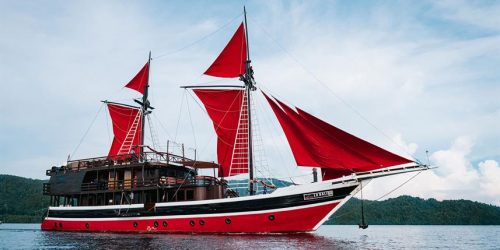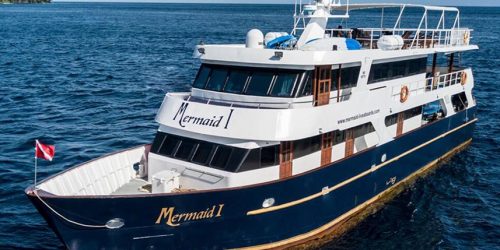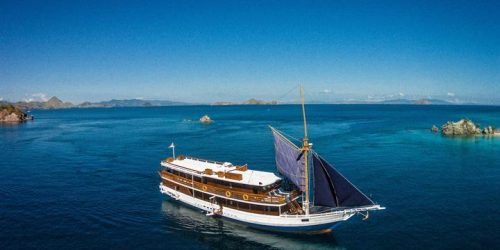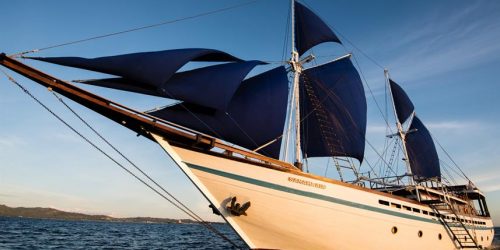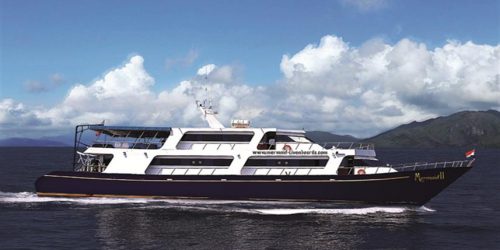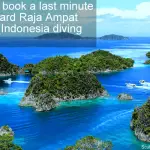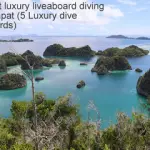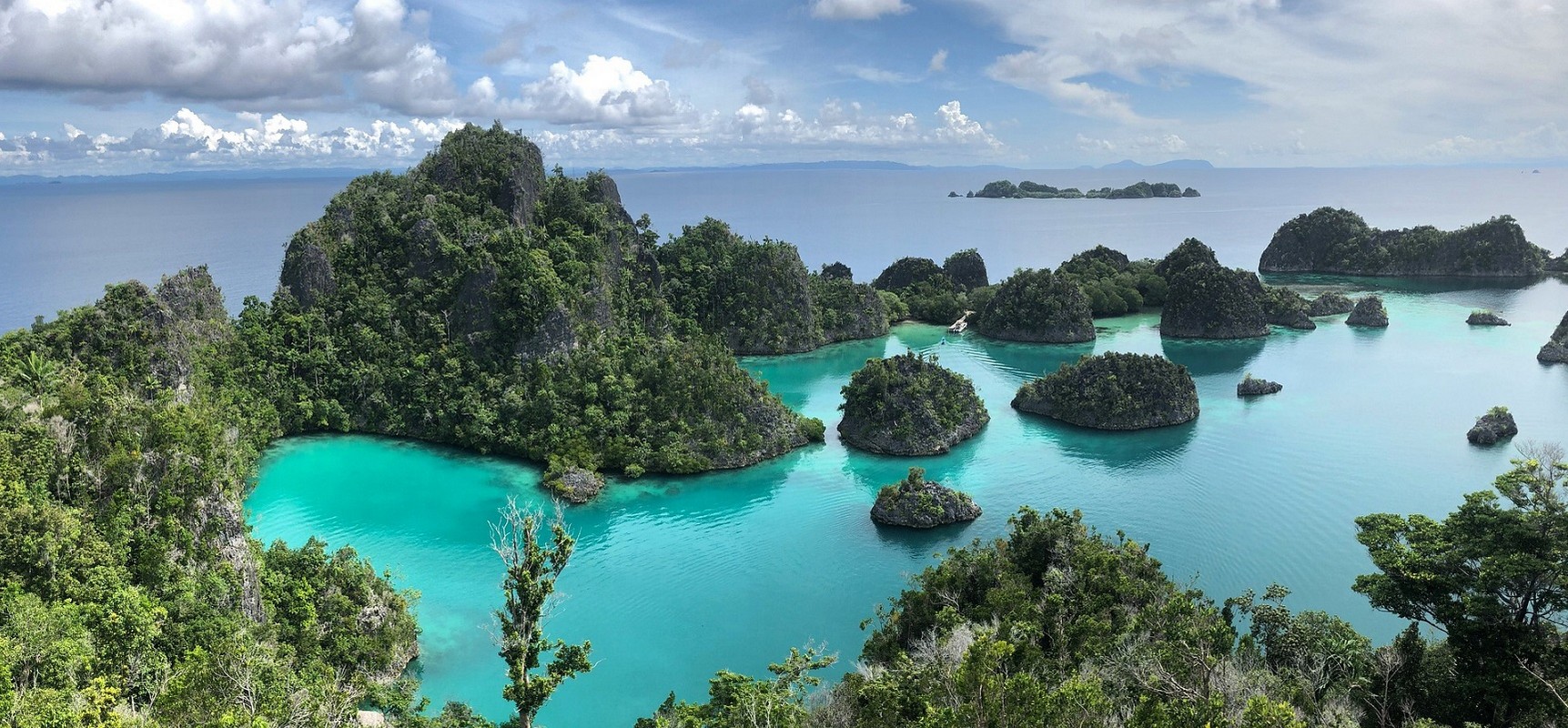
Raja Ampat Liveaboard Diving
Remote Liveaboard Diving Raja Ampat On Pristine Reefs With Sharks, Mantas And Marine Life
Popular Raja Ampat Liveaboards
| Tiare Cruise; Liveaboard diving in Indonesia; 9.7 out of 10 and is rated 'Exceptional'; from £334, $407, €381/day. Customer Review: “Raja Ampat done in style – such a wonderful adventure! Too many highlights. Relaxed holiday with range of 2 to 4 dives per day combined with onshore activities including some hard (staired) climbs for amazing views, a trip to Jellyfish lake and culminating on a wonderful dinner on the beach. The diving was simply more than I imagined – frequent mantas, large schools of fish, octopus, endless soft and hard corals healthier than anywhere I have been, and amazing night dive at Sapokreng – the flamboyant cuttlefish! Mixed nationality passengers made for interesting conversations – a wonderful trip. Will definitely try to go again!” Recommended for: The Indonesian crew worked tirelessly and always with a smile, the casual chicness of the gorgeous boat and the amazing dive sites – like nothing I have seen and overload of Mantas! |
| KLM La Galigo; Liveaboard diving in Indonesia; 9.2 out of 10 and is rated 'Superb'; from £252, $307, €287/day. Customer Review: “Out of this world! Crew, boat, food, diving, everything of the absolute highest standard!!! Making friends with whole crew (Tom really takes personal pride in his boat, his crew and the experience of his customers). The selection of dive sites, all amazing and the guides ability to spot and ensure the whole group saw everything was the best I have experienced in almost a dozen liveaboard trips! The food, accommodation and equipment all top standard and maintenance and cleaning and help was above and beyond!!!” Recommended for: Selection of dive sites, quality of service, standard or boat and diving equipment. |
| MV Mermaid I; Liveaboard diving in Indonesia; 9.2 out of 10 and is rated 'Superb'; from £254, $310, €290/day. Customer Review: “A magical 10 day diving holiday. This was one of the most amazing diving trips. Everything underwater is stunning. nothing disappoints. Te staff are wonderful and extremely helpful. I am unable to lift a tank due to back problems. They helped me every time. They also take excellent care of the equipment after dives by rinsing and hanging our wetsuits to dry and at the end of the trip cleaning and drying our BCDs and regulators as well. The reason I gave this 4* on cabin comfort is that I prefer to have the shower cubicle separate from the toilet. You get used to it after a while but it is not ideal.” Recommended for: Stunning dives, exceptional service, comfort. |
| Mari; Liveaboard diving in Indonesia; 8.8 out of 10 and is rated 'Fabulous'; from £186, $227, €212/day. Customer Review: “Great way of seeing all Raja Ampat has to Offer. 19 Varied and excellent dives where we saw pretty much everything we expected. We were well looked after by the dive guides who did safety checks prior to each dive.. important as there are some strong currents. The mantas, pygmy seahorses and sharks (especially wobble gong and walking sharks)were spectacular. There was plenty of food and it was tasty but perhaps lacked a little in creativity.. we had rice for every lunch and evening meal. We enjoyed the land tour but would have liked perhaps a village visit. The boat worked like clockwork and we had a great group of 8 international clients.. All in all we had a wonderful time and the KLM Mari and its crew will give you a super RA experience.” Recommended for: The Beautiful Boat , the dedicated crew, and the superb diving. |
| MV Samambaia; Liveaboard diving in Indonesia; 9.5 out of 10 and is rated 'Exceptional'; from £300, $366, €342/day. Customer Review: ”PERFECT ! Marvelous boat & team. The absolute dream for a dive trip. Seriously! Exceptional experience. The boat is new (launched in september 2015) and a marvel of traditional and modern ironwood and teck wood work. We were lucky to get the master cabin which is the best floating room we ever had on such trips (comes with a king size bed, full 9 feet ceilings, private bath and most importantly a stunning 280° continuous windows on the main rear deck and the beautiful Komodo sea and islands landscapes!). Each time you set foot on board (and there are many occasions), you are welcome with a large smile and either a fresh drink or a hot chocolate (quite precious after night dives). Marvelous combination of Italian hospitality at its best (the boss and owner was on board with his son and lovely wife), including wine tasting and high fooding standards, perfect Indonesian seamanship and service, with expert massage on request, and a wonderful German diving instructor (with both a serious dedication to safety, a refreshing sense of humor and a true ability to share his passion and vast knowledge a the marine life). We took the nitrox course (the nitrox is free on board).The dive sites are world class, among the best we dived for the last 25 years (that includes Sipadan, the Red Sea, Djibouti, Costa Rica, Cozumel, Turkey, Corsica, Phuket / Phi-Phi, Ko Tao, Cebu, Sri Lanka, Bali, Lombok / Gillis, West indies, Turks & Caicos, Tioman…). In a week around the national park of Komodo, from Bima to Labuan Bajo, you can expect to sea amazing soft corals, most of the indo-pacific benthic life (including a large number of stone fishes, cuttle fishes, nudis..), turtles, sharks, mantas… Some ”firsts” for me were the attack of the ominous bobbit worm, the ”live” feeding of a starfish by an anemone, the ”live” feeding of a very large holothurie, the magic show of the Spanish dancer, among the best video footage I got. On the top of the liveaboard experience and diving, the Komodo dragon encounter is not to be missed. Not such much at the Rinca ranger station (although the hike there is worth it), than the pack of 5 roaming freely on the beach at horseshoe bay! If you are looking for an amazing week, do not hesitate one second, Go for it !” Recommended for: BOAT – DIVES – TEAM. |
| MV Mermaid II; Liveaboard diving in Indonesia; 9 out of 10 and is rated 'Superb'; from £235, $287, €268/day. Customer Review: “An amazing experience. This was our second time aboard the Mermaid having previously visited Komodo in 2014. That trip was amazing and would have been hard to beat but this was just as good, if not better. Nothing is ever a chore for the wonderful crew, so friendly and helpful. The dive guides were fantastic especially our guide Ketut who really looked after us. All the dives were planned in advance and we went to the best sites. Very clear briefings and safety was always front of mind. The boat is really well maintained and stocked. Everything is organised to the finer details and is like a well oiled machine meaning you’re never left waiting. The food is incredible, the best we’ve had on a liveaboard. The Mermaid really sets the bar.” Recommended for: Diving, food, and crew. |
TO SEE ALL INDONESIA RAJA AMPAT LIVEABOARDS SCROLL TO THE TABLE BELOW
Liveaboard Diving in Raja Ampat
Raja Ampat liveaboard diving is about diving remote and unspoilt areas of Raja Ampat’s over 200 dive sites in comfort on luxury liveaboards like the Tiare Cruise, or on basic to mid-range boats when on a budget. Enjoy Raja Ampat’s most stunning sites all you yourself on a private liveaboard charter.
Raja Ampat Liveaboards are the best way to scuba dive this amazing remote and unspoilt place of Indonesia. The best way to explore Raja Ampat is to book yourself onto a liveaboard dive boat.
Raja Ampat is about crystal clear water and beautiful white sand beaches of the many islands and islets of this beautiful region of Indonesia. Raja Ampat is an archipelago, which is made up of over 1,500 islands and islets in the coral triangle. The main islands of Raja Ampat are Salawati, Batanta, Waigeo and Misool, which are better known as “The Four Kings“.
These islands sit between the Indian and Pacific Oceans, which means the seas are rich with marine life of all shapes and sizes. The visibility is between 25-30 metres (82-99 feet), and water temperatures are balmy and range from 28-29°C (82.4-84.2°F).
Before you book your Raja Ampat liveaboard, you might like to read this article about “Liveaboard vs Resort Diving (The Pros Versus The Cons Of Both)“. Many dive sites of Raja Ampat can be dived from a resort base, but it’s the more remote locations that are best dived by liveaboard. Plus you always dive more dives on a liveaboard.
What Marine Life Do You See in Raja Ampat?
One of the reasons why Raja Ampat is one of the best places to dive in the world is due to the marine life seen there, which includes manta rays, sharks, moray eels, napoleon wrasse, or even a passing whale’s shark!
Does Raja Ampat Have Sharks?
Raja Ampat has many species of shark, which includes large numbers of blacktip reef sharks, grey reef sharks, whitetip reef sharks, silvertip sharks, tasselled Wobbegong sharks, walking Epaulette shark and whale shark at Cenderawasih Bay.
Most of the Raja Ampat sharks are included on the following video:
Is Raja Ampat Good For Diving?
Indonesia’s Raja Ampat is not just good for diving, but is a scuba diving Mecca. There’s no place quite like Raja Ampat for marine life, gin-clear waters, which is what makes it a scuba destination of choice and is on many diver’s bucket list to visit.
However, Raja Ampat can be an expensive place to dive from a liveaboard as it’s difficult to get to. So you may need to plan well in advance before you book your Raja Ampat liveaboard trip.
Is Raja Ampat Worth It?
Raja Ampat is worth it for sure, as it is an incredible part of the world to dive and is definitely worth the visit. But make sure you are prepared before you book by having the correct level of certification and diving experience, so you don’t miss out on the best dives.
Can Beginners Dive in Raja Ampat?
Beginner divers can dive in Raja Ampat and the liveaboard crew are used to working with divers of all levels. The Raja Ampat liveaboard crew will make sure you are taken to dive sites to suit your experience and level of certification.
But check the liveaboard’s experience and certifcation level required, ads some require Advanced Open Water Diver certification as a minimum.
Also, if you are a beginner diver, and if you would like snorkelling in Raja Ampat, the shallow waters and the rich marine life make this the perfect snorkelling location as well as a dive location.
What is The Best Time of Year to Dive Raja Ampat?
The best time of year to dive Raja Ampat is October to May, which is the best season with less rain, calmer seas and better visibility. The majority of liveaboards offer trips throughout the year, but the best time to dive is October or November.
October and November are the months when the winds are the gentlest and the ocean is the calmest, which is good if you think you may suffer from seasickness on a liveaboard.
Diving at this time of year means you’ll be able to visit all the main diving hot spots of Raja Ampat from Misool Island in the south to Wayag Island in the north.
Raja Ampat does have unpredictable weather conditions, which means that liveaboards have plans and contingencies to deal with any unfavourable weather conditions to make sure you still have a good trip.
How Many Days do You Need in Raja Ampat?
A Raja Ampat liveaboard trip of at least 7 days is what’s needed as a minimum to get the most out of diving this part of Indonesia. An 8-day, 7-night liveaboard itinerary is the shortest trip recommended to make sure you have time for diving and also to decompress after your last dive.
Table of Raja Ampat liveaboards
This list of Raja Ampat liveaboards is in descending customer rating order, so the liveaboards with the highest customer rating will be at the top of the list. To filter this table for the features that are important for your Raja Ampat liveaboard trip, select from the list of filters below.
| Discover Liveaboard | Customer Reviews | Price Per Day | |
|---|---|---|---|
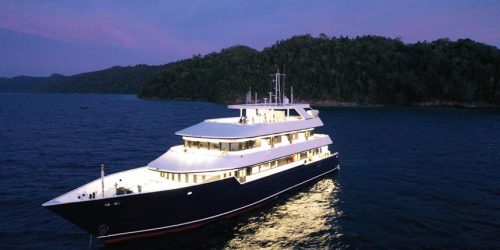 | Review: MV Seaisee; Book: MV Seaisee | 10 Exceptional | from £281; $343; €320 |
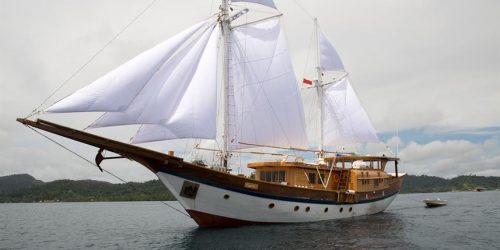 | Review: Leyla; Book: Leyla | 10 Exceptional | from £267; $326; €304 |
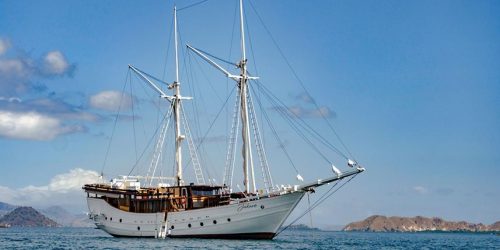 | Review: Jakaré; Book: Jakaré | 10 Exceptional | from £255; $311; €291 |
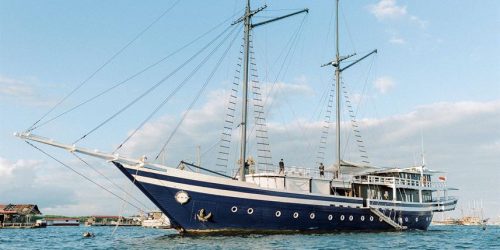 | Review: Scubaspa Zen; Book: Scubaspa Zen | 10 Exceptional | from £450; $549; €513 |
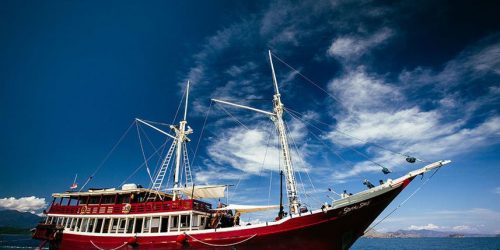 | Review: Seven Seas; Book: Seven Seas | 10 Exceptional | from £378; $461; €431 |
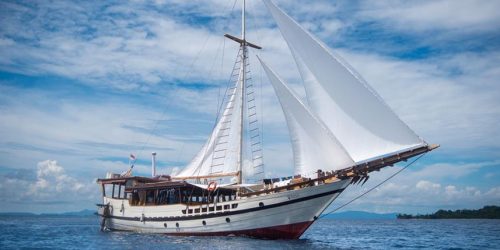 | Review: Wisesa; Book: Wisesa | 9.9 Exceptional | from £200; $244; €228 |
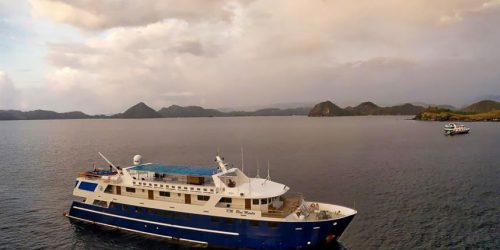 | Review: MV Blue Manta; Book: MV Blue Manta | 9.9 Exceptional | from £226; $276; €258 |
Note: The above “Price Per Day” was correct at the time of producing this article, as was the exchange rate used to convert the GBP cost to US Dollars and Euros. For an up-to-date cost for your chosen liveaboard, please visit the “Book” link above.
Dive sites of Raja Ampat
Misool Island Diving
Misool Island, which is nicknamed ‘the kaleidoscope’ because of the amazing colours found there. Misool Island and the dive sites are a macro lovers dream, where you can find colourful nudibranchs of all shapes and sizes, pygmy seahorses, ghost pipefish, sea snakes, octopus, crabs and many small reef fish.
But it isn’t necessarily all about the small stuff, as there is the chance to see manta rays, barracudas, snapper and sharks like the Wobbegong shark and Epaulette shark at Misool too.
Waigeo Diving
Waigeo also has colourful coral reefs and a must visit dive site, where the current can be strong making it a drift dive.
It is the currents on the South-west end of the island that are the most severe, which are dives that are not suitable to beginners divers. The Corner dive site is on the South-western side of Waigeo, which is a challenging dive with strong currents, but with the payoff of spotting whitetip reef sharks and blacktip reef sharks in the deeper waters. But also, you may be lucky to spot an unusual looking Wobbegong shark resting on the slopes of the island too.
A must-visit during your dive safari. Waigeo has a rich blend of marine life, which includes clownfish, lionfish and large shoals of trevallies and tuna at Dampier Straight.
Diving at Waigeo is know for its cephalopods, which include squid, blue ringed and red octopus and cuttlefish. But also, you may see mantis shrimp and sea dragons too at this popular dive site.
The dives tend to be around 25-30 meters (82-99 feet) deep with excellent visibility of up to 30 meters (99 feet).
Mansuar Diving
Mansuar diving is where you’ll spot the larger marine life such as turtles, manta rays. At the dive sites at Masnuar will also see pristine corals, wobbegong sharks, blacktip reef sharks, barracuda, Napoleon wrasse, batfish, boxfish. giant clams, surgeonfish and sweetlips.
Cenderawasih Bay Diving
Cenderawasih Bay is the place to see whale sharks in Raja Ampat. Cenderawasih Bay is where these gentle giants have built a friendship with the local fishermen who feed the whale sharks, which is why they congregate here.
The fishermen think that feeding the whale sharks will bring luck to them, but this luck translates to divers and snorkelers who visit this area, as there are normally several whale sharks in the area at a time.
There isn’t a whale shark season at Cenderawasih Bay, as whale sharks seen all year round.
I hope you enjoyed this page about Raja Ampat liveaboard diving
I’d love to hear from you. Tell us about your adventures of diving and snorkeling, in the comments below. Please also share your photos. Either from your underwater cameras or videos from your waterproof Gopro’s!
If this article hasn’t answered all of your questions. If you have more questions either about snorkeling or scuba diving (or specifically about Raja Ampat liveaboard diving), please comment below with your questions.
There will also be many more articles about scuba diving (and snorkeling) for you to read and learn about these fabulous sports.
Have fun and be safe!
Select Another Liveaboard Location
| All Liveaboard Locations |
| Discreet Liveaboard Locations |


